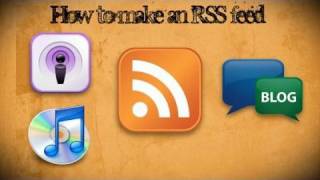
Want to send information to your audience instantly, so they don't have to go to your site? I've a solution for this: RSS feeds. RSS (Really Simple Syndication) feeds are still a great way to give people real-time content, no matter social media and emails have become more popular. In this guide, I came up with how you can use XML to make RSS feeds, which will help you get your content to more people.
What is an RSS Feed?
RSS feeds are XML docs from where people can get regular updates through news sources, websites, blogs, or podcasts by subscribing it. By default, RSS feed has highlights, links, and information of newly published content. Let's see an RSS feed's basic structure:
<rss version="2.0">
<channel>
<title>Blog Name</title>
<link>http://example.com</link>
<description>Latest updates from Blog Name</description>
</channel>
</rss>
Essential Components of an RSS Feed
- The channel element encapsulates the whole feed. You can find general site or channel information from there.
- The title, link, and description of your feed assist readers understand its purpose.
- Different sub-contents of a content in RSS feed, such as a blog article, is represented by an <item> element.
- Publishing date (<pubDate>) and unique identifiers (<guid>) let developers organize and differentiate information.
<item>
<title>Post Title</title>
<link>http://example.com/post-url</link>
<description>Short summary of the post</description>
<pubDate>Wed, 03 Oct 2024 10:00:00 GMT</pubDate>
<guid>http://example.com/post-url</guid>
</item>
Step-by-Step Guide: Creating an RSS Feed with XML
Create the XML Structure
To start, launch a text or XML editor and add the <rss> root tag. Then, define the version (usually 2.0) and add a <channel> tag to surround your feed.
Add Channel Information
Put the important information inside the <channel> tag, like a title, a link to your website, and a short summary of what your feed offers.
Add Item Elements for Content
Every new piece of information, like a blog post, has its own <item> element. Add a title, a link, a summary, the date the post was published, and a <guid> unique to each post.
Validate and Test Your Feed
Make sure your XML is correct and well-formed by using RSS validators like the W3C's feed validator. Check the feed in a number of different RSS apps to make sure it works right.
Common Mistakes and How to Avoid Them
- Invalid XML Syntax: Close and nest all tags.
- Missing Metadata: Valid <channel> and <item> need titles, links, and descriptions.
- Incorrect Date Format: Use RFC 822 for <pubDate> to prevent reader problems.
- Unique GUIDs: Each <item> needs a unique <guid> so that feed users don't show the same content twice.
Conclusion
RSS feeds could appear old-fashioned, but they are a good way to make sure that your audience always has fresh content. You don't have to use letters or social media to keep your readers up to date. All you need is a little setup. Implementing RSS makes it easier to share information and get more people to interact with it.
1.3k views
